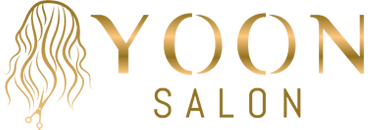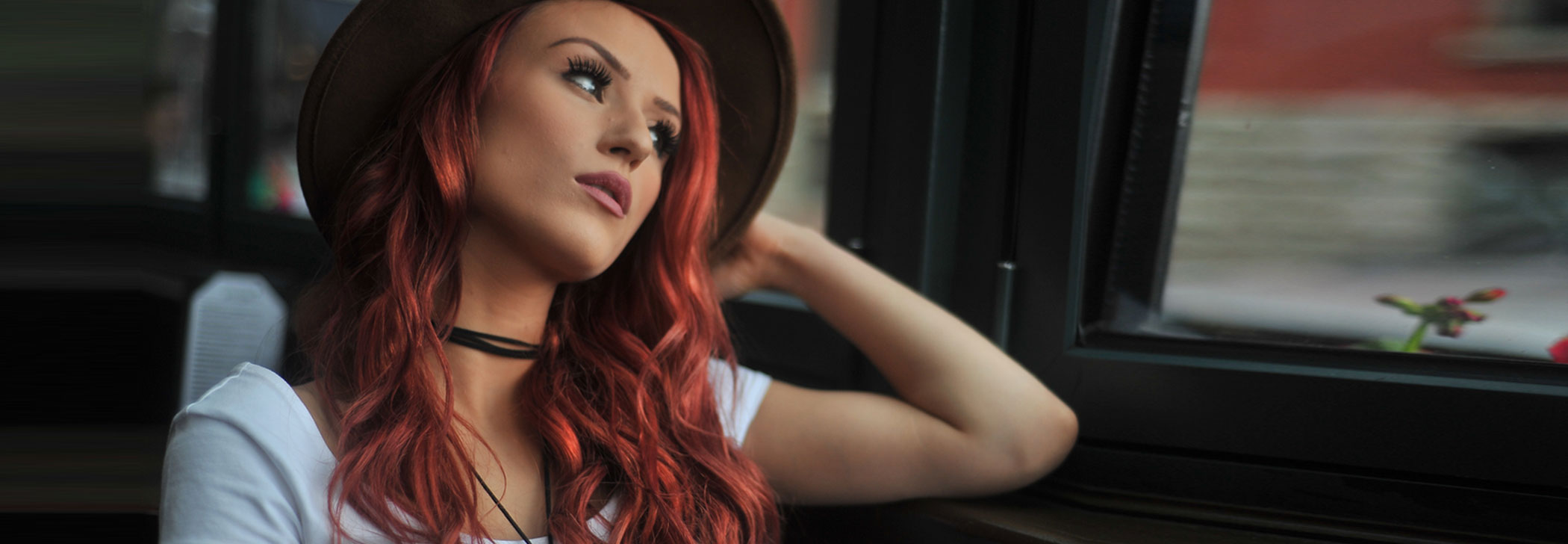
How to Pick The Right Hair Dye for Yourself
Planning to dye your hair but unsure of which type of dye to opt for? Or maybe you’re not sure whether that shade you’re fantasising about will suit you or not? Choosing the right dye can be complicated, especially when there is such a variety of trends out there. For the past couple of years, ombre, blonde, and grey tints have been selling like hotcakes. But do they suit you?
With so many options out there, many of us will easily feel overwhelmed, not being able to decide on the tint and style of job. And just relying on your imagination to envision how you will look with a particular shade or colouring technique can only do so much.
Therefore, an expert’s consultation is a must. An experienced stylist can provide sound and valuable suggestions to you. Start by scheduling an appointment with us for your dyeing service. Next, consider the following factors:
- Purpose
- Preferred type of dye
- Skin tone
- Personality
- Facial features
Take note of these before heading down to the salon. Now, let’s move on with a quick question: why do you want to dye your hair?
Purpose of Dyeing Your Hair
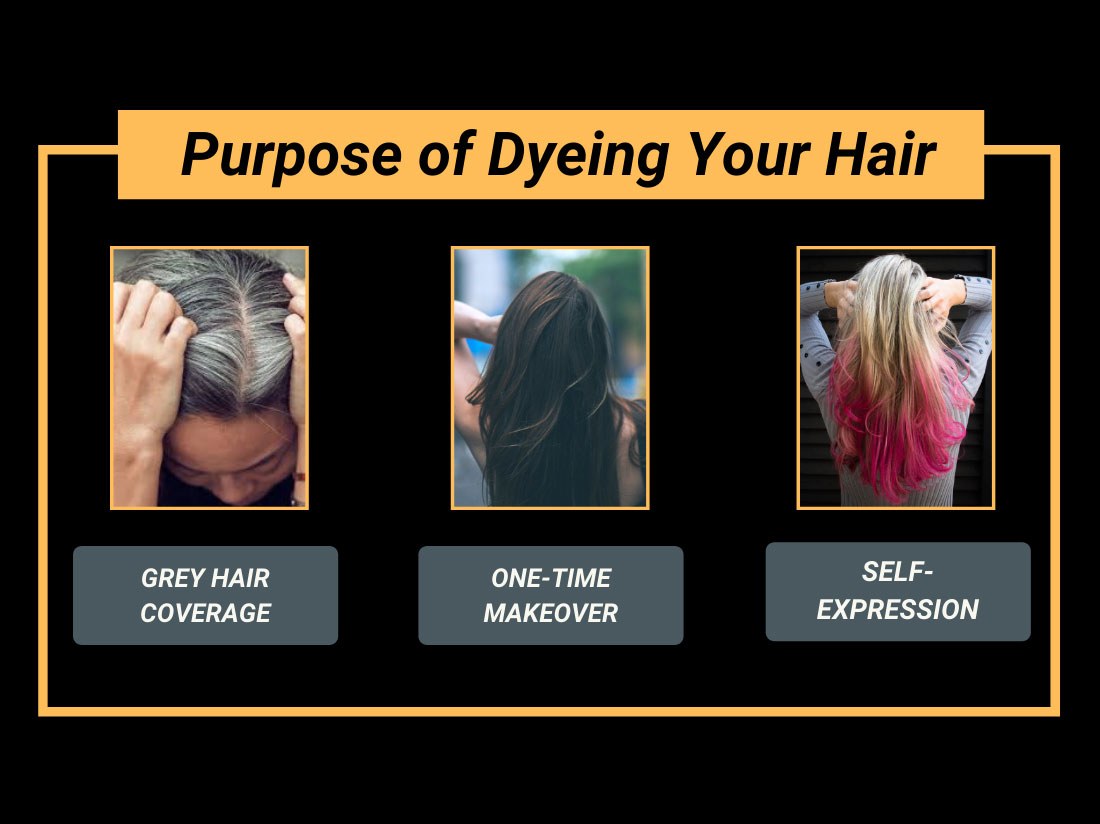
Everyone has different reasons for dyeing their locks. Once you realise yours, it will be easier for you to look out for the most suitable options or types for yourself, among all the available variations. Typically, a person will change up their hair colour for these basic reasons:
1. Grey Hair Coverage
Not too fond of greys peeking out of your tresses? Grey locks are common amongst individuals who are older or whose strands have aged prematurely due to their genetics or environment. If you would much rather hide your greys, you can dye your locks back to a natural shade or a long-lasting hue of your choice.
2. One-Time Makeover
Are you hosting a party or do you have an invite for a party? A flattering change of colour can give you a complete makeover that is sure to impress. Alternatively, you may also change your tresses’ shade temporarily to suit a party’s theme.
3. Self-Expression
Perhaps you just want to dye your tresses to express yourself. Do you have a fun character who loves to explore with various hues and shades? Or do you simply prefer to have a constant change in life? Consider going bold with striking shades that bring out all that personality in you. Dyeing your locks can truly transform the way you look. So you’ve got your purpose — what’s next?
3 Types of Hair Dye
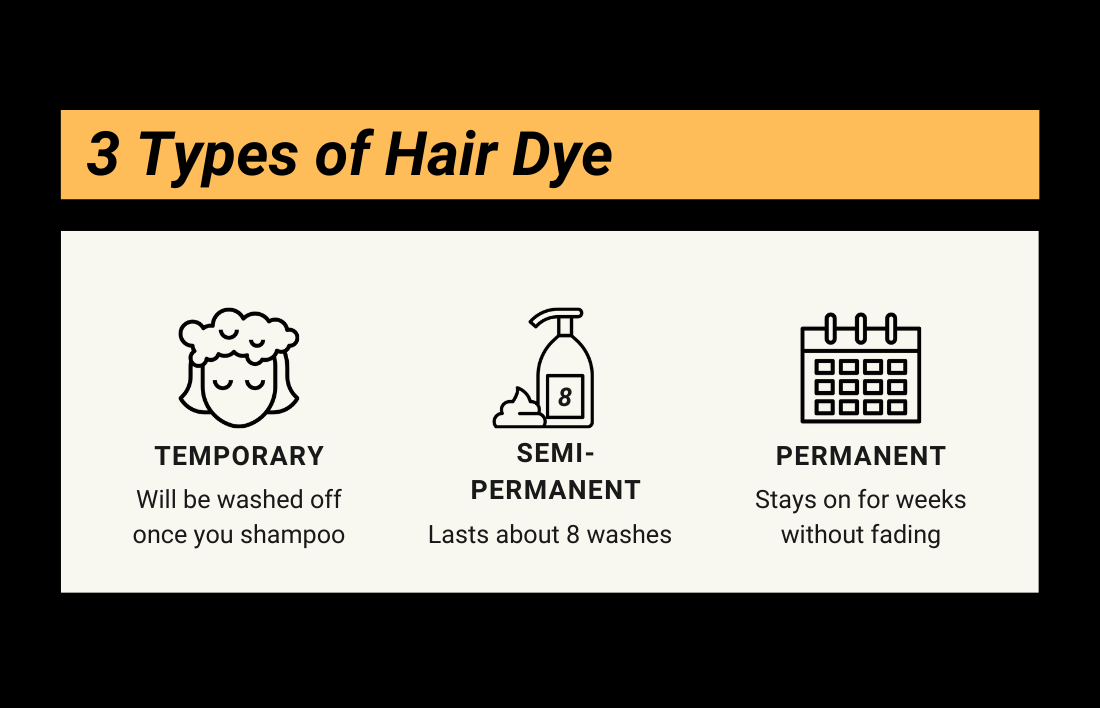
With your newfound direction, you can then decide among the different types of dyeing techniques out there. There are two factors that distinguish hair dyeing types:
- How long they last
- How they infuse the chemical into your tresses
Here’s how the different types of dye interact with your locks:
1. Temporary Dye
A temporary dye only coats the top layer. So once you shampoo, the hue will be washed off to return your tresses to their original shade. This type of dye is perfect for party-goers or event hosts. It can be applied in the form of rinses, gels, mousses, and even sprays.
2. Semi-Permanent Dye
Semi-permanent dyes usually last for about eight washes since they penetrate into the hair shaft. They’re a good deal for those who wish to have a change of tint for a limited period of time — perhaps for a vacation or an out-of-town photoshoot.
3. Permanent Dye
A permanent dye penetrates into the shaft deeply and locks itself inside. The staining will last for many weeks without fading, making it great for long-lasting coverage. Dyes that are permanent typically contain hydrogen peroxide which covers grey strands more effectively.
6 Types of Dyeing Techniques
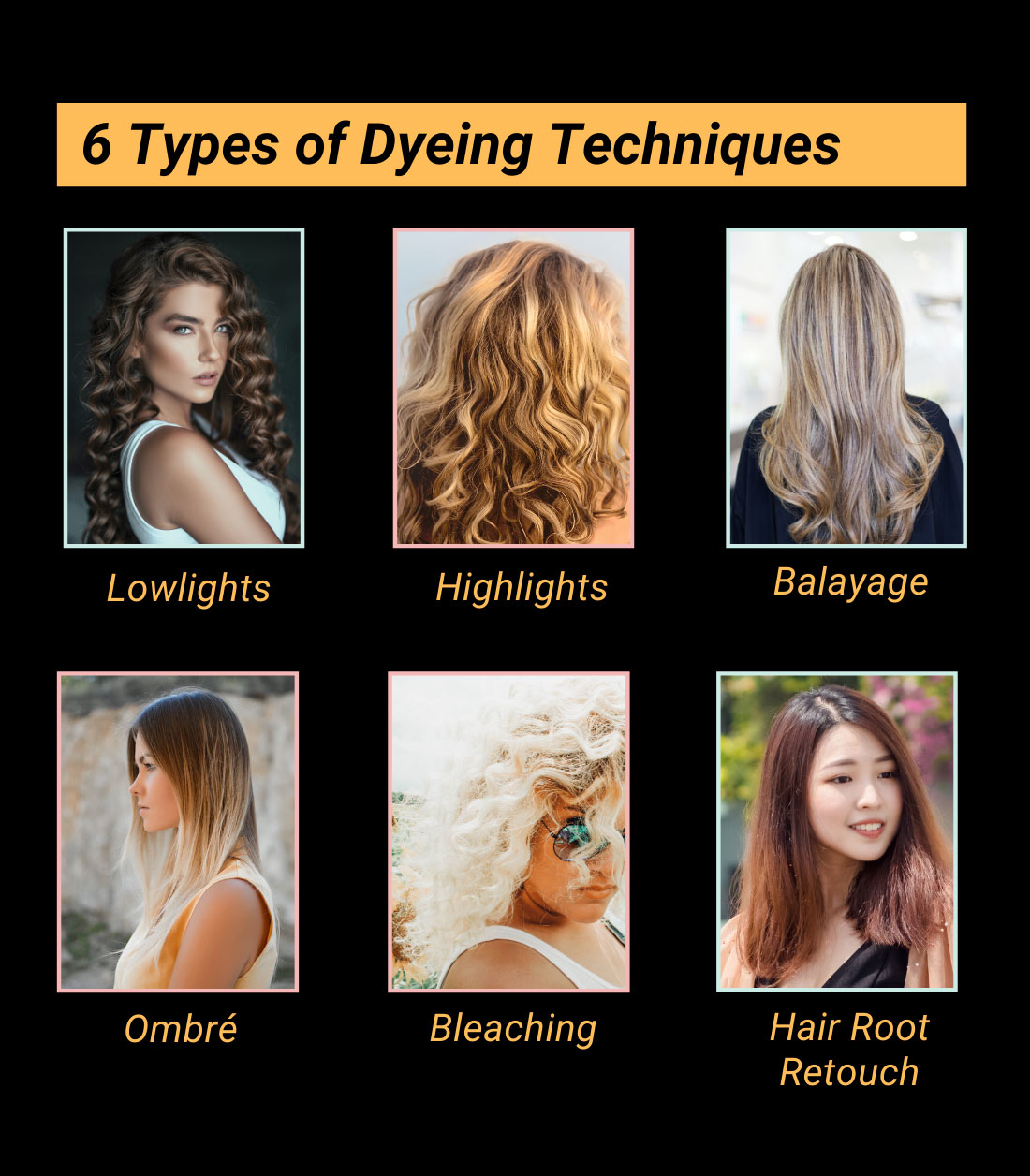
Beyond the different types of dye, there are also different techniques used to apply them. Learn about six of these techniques:
1. Lowlights
Lowlights technique involves shading deeper shades for added dimension, instead of picking various strands to lighten.
2. Highlights
Highlights are the opposite of lowlights, whereby it creates depth through the placement of lighter shades on varying segments. For a multi-dimensional look, opt for textured highlights. Different shades of a single colour are used to create an illusion of volume.
3. Balayage
This technique involves colouring parts of your head where the light hits naturally. Strategic stain placement is key to this technique. Your parting, hair length, and styling will all be taken into consideration. This creates a more youthful, natural-looking glow to your mane.
4. Ombré
Ombré leaves your natural shade as it is at the roots. But then a lighter highlight is used to gradually blend from one shade to another as it moves towards the bottom of your locks. This method is now quite popular in town.
5. Bleaching
Bleaching lightens and brightens your tresses. Those with naturally dark-coloured tresses will most likely require bleaching to first lighten the current hue before dyeing it to any lighter shades.
6. Hair Root Retouch
Do you plan to maintain your natural shade but wish to cover up grey roots? If you are, then you may opt for a hair root retouch. Root concealer products are used to cover up grey strands quickly and easily. They can be sprayed directly to the roots and blended into the rest of your tresses through combing. There are both temporary and permanent options in the market.
Identify Your Skin Tone
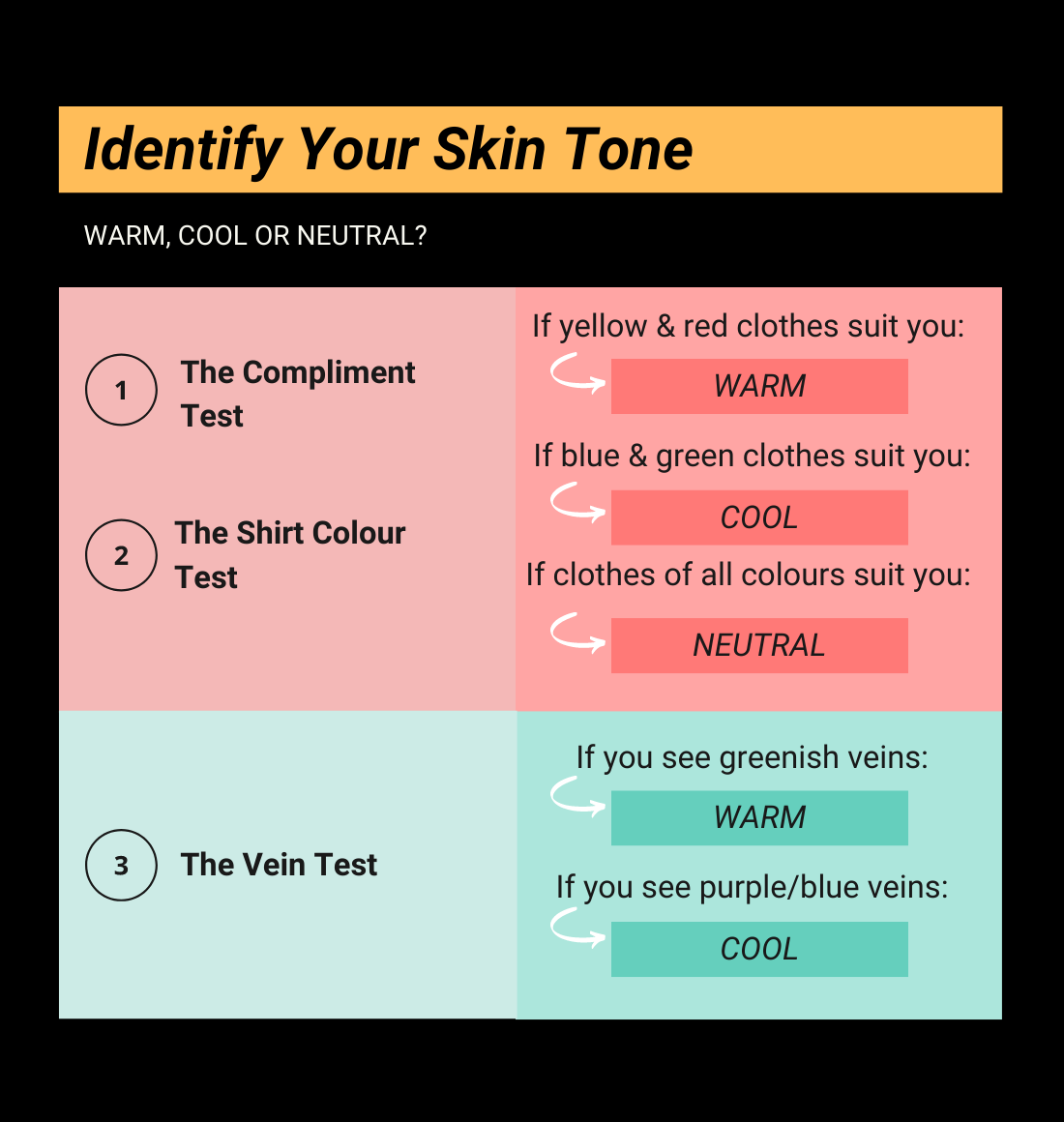
With all the options laid out for you, you may be closer to matching your purpose with the kind of dyeing service. For instance, you may wish to have temporary green highlights for a party with a jungle theme to appear unique. Or perhaps you can opt for an ombre effect to express your inner personality. But what colours will suit you? This is the fun part — choosing the right tint using your skin tone, facial features, and personality.
How can we find a hair colour that complements your skin tone? You may have noticed that an ashy tint will look perfect on someone, but the same tint on another makes them appear flushed. Generally, a warm hair hue will look best on people with a warm undertone, while a cool hair hue will look ravishing on a person with a cool undertone.
A person with cool pink undertone skin will, therefore, look better with ashy hair colour, compared to someone with a warmer undertone. This is due to the combination of colour and light. To look natural in a certain shade, you should consider the warmth or coolness of the shade against your unique undertone — warm, cool or neutral/olive:
- Warm: Your skin is predominantly yellowish or golden
- Cool: Your skin is pink, blue or red
- Neutral/Olive: Your skin has a mix of cool and warm hues
Here are three quick ways to determine your skin tone:
1. The Compliment Test
The first way is to look back on clothes for which you’ve received compliments. If the shades are yellow, peach, or orange, you may have a warm tone. If it is blue, green or purple, yours may be cool, instead. But if you look great in all shades, your undertone is probably neutral.
2. The Shirt Colour Test
If you can’t remember any compliments, conduct a shirt test using a mirror in a room with natural lighting. You must have a freshly cleaned face with no traces of makeup for this test. Hold up a green or blue shirt in front of the mirror. Next, hold up another shirt that has shades of yellow or red. See which one suits you better. If you feel that you look amazing next to the blue shirt, you are likely to have skin with cool undertones. If you think you look better with a red shirt, then you may have warm-toned skin.
3. The Vein Colour Test
Alternatively, you may conduct a vein examination. Look at your wrists. If you see greenish veins, you have a warmer undertone. Those with cooler undertones will see purple or blue veins. If you have a mix of both, yours is quite possibly neutral.
Complementary Hair Colours for Your Skin Tone
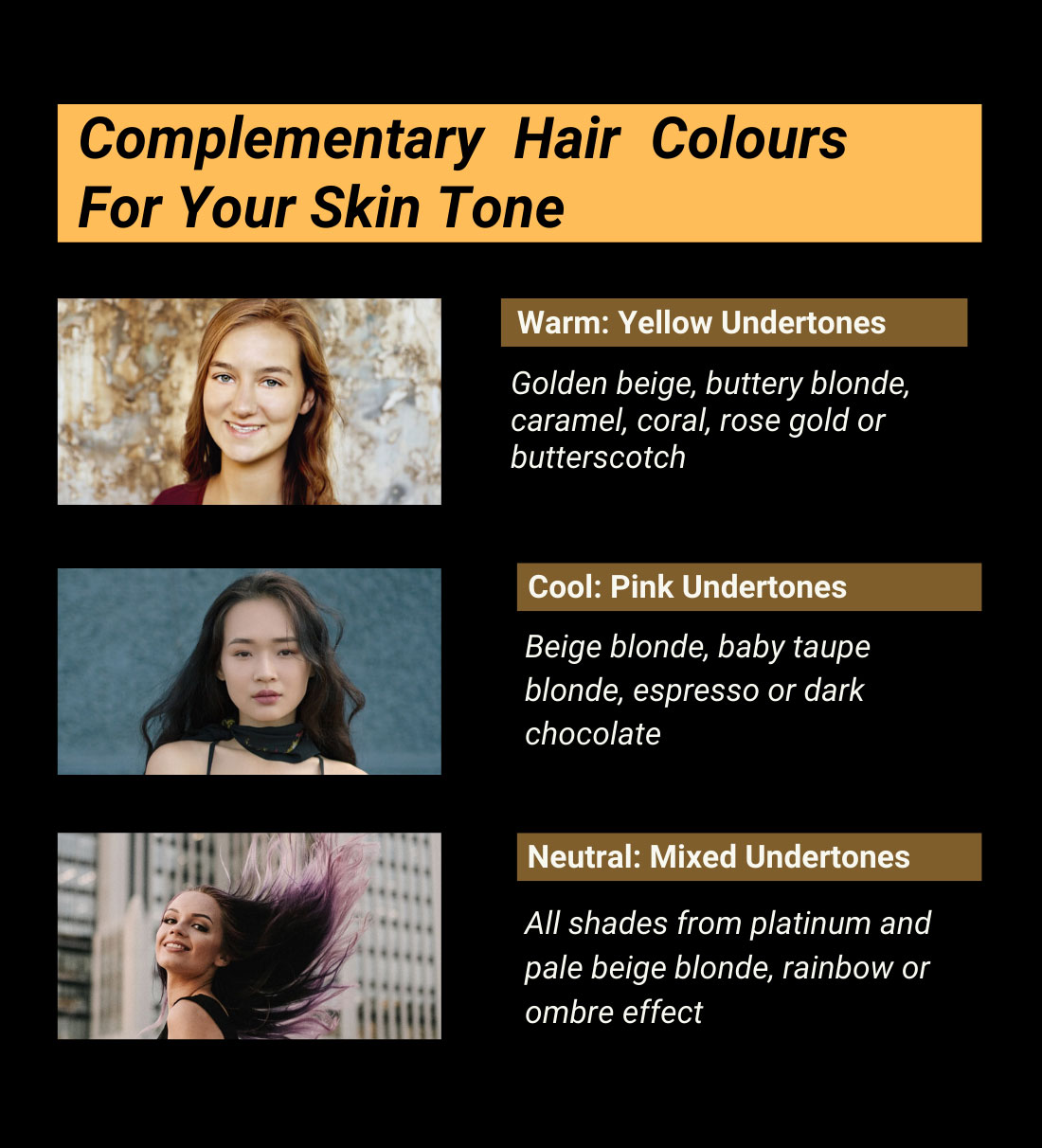
Now that you know your undertone, choosing the right shade for your precious tresses is a lot less complex. Here’s a general guide for that:
1. Warm Undertones
Go with golden beige, buttery blonde, caramel, clove or butterscotch. Should you wish to go for red, then opt for golden copper hues. But if you are ready to experiment with more vibrant colours, choose coral, apricot, rose gold, and yellow.
2. Cool Undertones
Go with beige blonde, baby taupe blonde, espresso or dark chocolate. Should you wish to go for red, opt for subtle shades of mocha, burgundy or merlot. You can easily match shades of blue, green, pink, and purple too.
3. Neutral or Olive Undertones
Flaunt any colour without feeling out of place. From platinum and pale beige blonde to an amber blonde or golden blonde, any colour, any rainbow or ombre effect will most likely be perfect for you. Check with your hair colourist if you’re unsure!
What Is Your Personality?
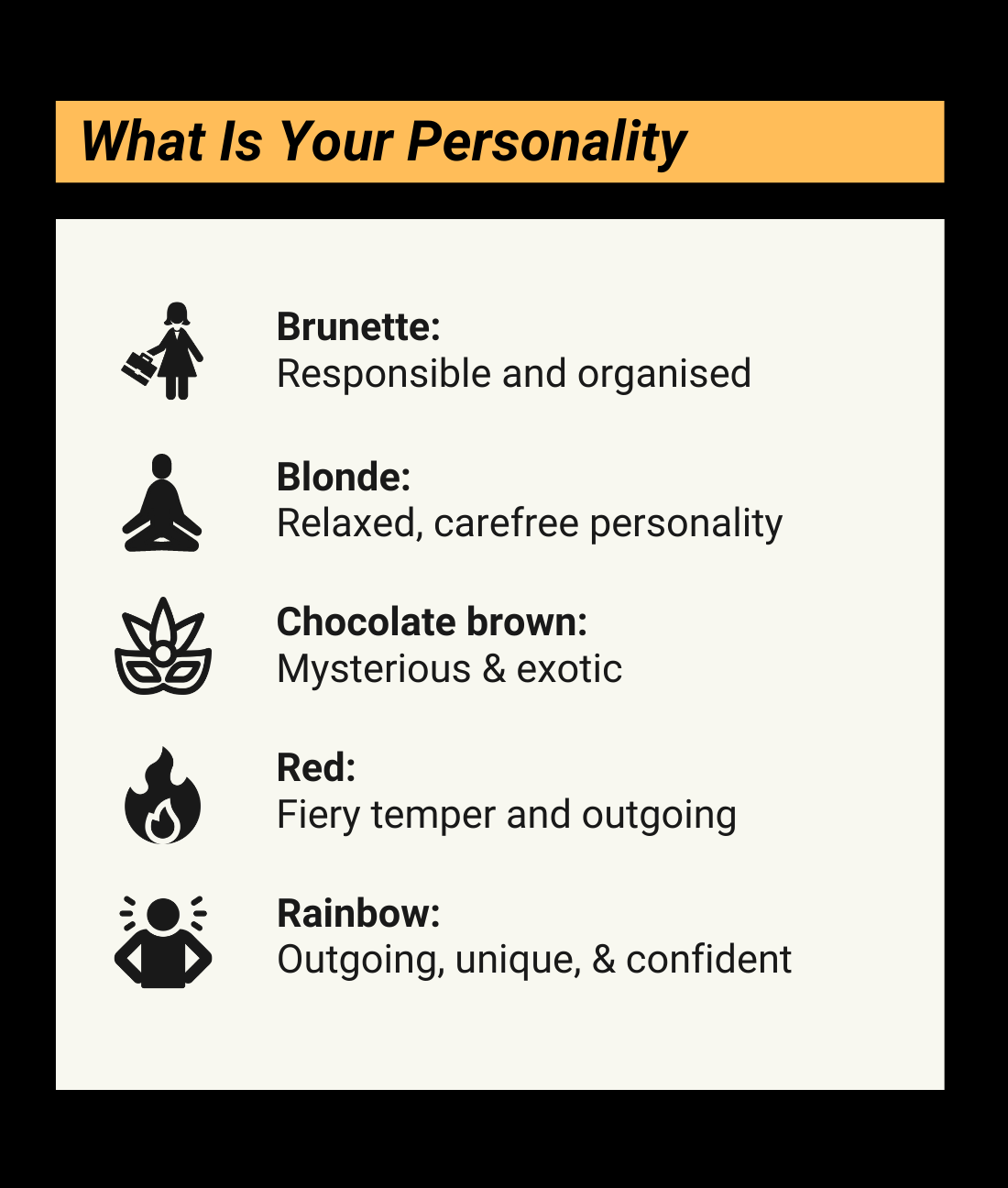
After understanding your undertone, the next factor you should consider is your personality. Your hair colour highly reflects your personality — who you really are and your lifestyle. Colouring lets the world know your thoughts and how you want others to perceive you. Each tint defines a different you to the world:
- Brunette: A responsible and organised person
- Blonde: A relaxed, carefree personality
- Chocolate brown: A mysterious and exotic personality
- Red: A person with a fiery temper and an outgoing personality
- Rainbow: An outgoing, unique, and confident person
The options are almost endless. Our well-trained, professional stylists at Yoon Salon will be able to bring out the colour that reflects your most powerful personality traits.
Facial Features
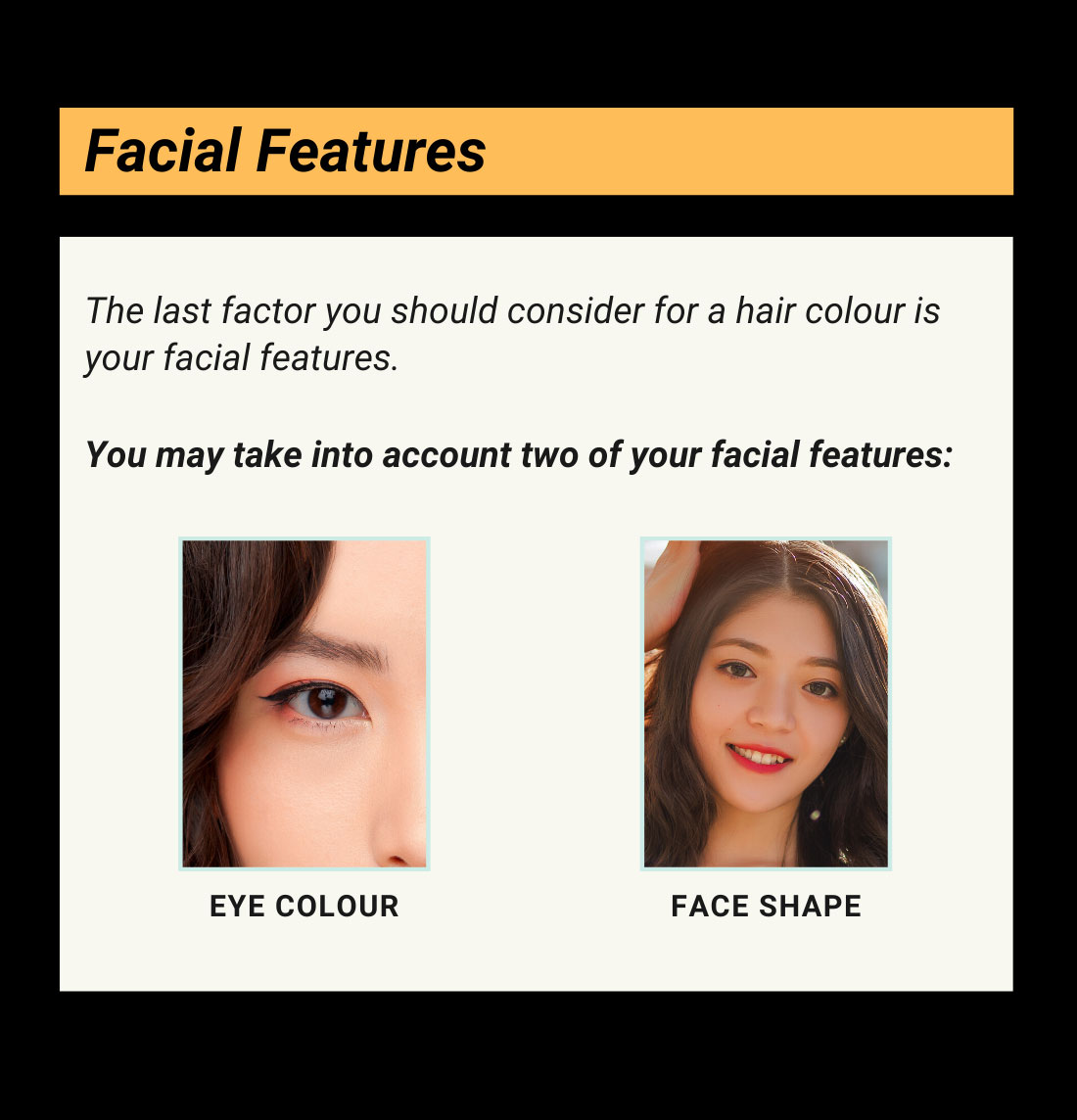
The last factor you should consider for a hair colour is your facial features. Just like putting on a highlighter to accentuate your bone structure, you can use different shades to shape the face. You may take into account two of your facial features — eye colour and face shape.
1. Eye Colour
Find a colour that makes your eyes pop. Most Asians have dark brown eyes. If this is you and you have a warm skin tone, go for dark browns and deep reds. If you have a cool skin tone, you may opt for dark browns or lighter browns such as honey. Of course, if you plan to wear blue eye contacts regularly and you have warm skin undertones, you might look good with golden browns, honey blondes, and chestnut browns. If your skin has cool undertones, instead, hues like platinum, blonde, auburn, and burgundy are great options.
2. Face Shape
Highlights add depth and texture to your face. But before adding them, consider your face shape. Ask your hair colourist for their opinion on this. Generally, these styles look great for these face shapes:
- Square face: Opt for even highlights throughout
- Round face: Opt for lowlights in the top half and highlights in the bottom half
- Long face: Opt for only the ends to have tinting for a less-sharper face
Conclusion
Once you have an idea of a suitable dye, colour, and technique for you, head down to a reputable salon with experienced stylists such as Yoon Salon. When you’re ready, our stylists can advise you on what is best for your needs, customise your options, and guide you on prolonging the effects of the treatment.
Do be sure to follow a proper care routine to prolong the effects of this treatment, keeping you fresh and stylish for a longer time. At the end of the day, you deserve to look like your best self. Treat yourself with our Premium Creative Hair Colouring with us today, and love the way you look.
